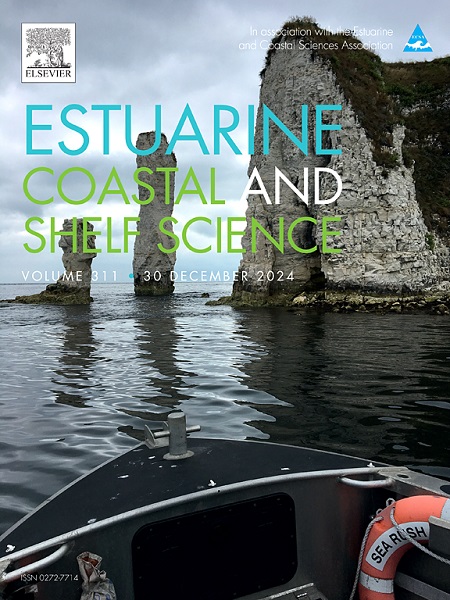Long-term variation in ghost crab metapopulations: From pre-pandemic degrading scenario to post-pandemic recovery with the establishment of a protected area
IF 2.6
3区 地球科学
Q1 MARINE & FRESHWATER BIOLOGY
引用次数: 0
Abstract
The ghost crab Ocypode quadrata (Fabricius, 1787) is adversely affected by anthropogenic impacts on western Atlantic sandy beaches, resulting in reduced burrow density and diameter. However, during periods of reduced human activity, as observed during the COVID-19 pandemic, ghost crab metapopulations may rebound. This study aimed to determine whether the recovery of the ghost crab metapopulation observed during the pandemic persisted into the post-pandemic period and following the creation of a locally managed Environmental Protected Area (EPA). Monthly data on burrow abundance and opening diameter from the lockdown (2020–2021) and post-pandemic (2022–2023) periods were analyzed and compared with historical data from pre-pandemic times (2013–2019) across areas with varying levels of urbanization and human disturbances. We hypothesized that burrow abundance and burrow opening diameter in urbanized areas decrease in the post-pandemic period compared to the lockdown even after the establishment of the EPA. A significant increase in burrow density in the most urbanized areas was observed during the lockdown and post-pandemic periods compared to pre-pandemic times, likely attributed to the "anthropause" and the restriction of activities such as vehicle traffic within the EPA. However, the most urbanized areas recorded the smallest burrows even during the lockdown and post-pandemic periods compared to non-urbanized areas, suggesting that recreational activities still affect individual energy budget and growth. Our findings highlight the importance of EPAs and mitigation actions, such as reducing degrading human activities, for ghost crab metapopulations and beach ecological integrity. Thus, balancing recreational activities and biodiversity conservation is feasible in these socio-ecological ecosystems.
鬼蟹超种群的长期变化:从大流行前的退化情景到大流行后保护区的恢复
大西洋西部沙滩上的鬼蟹(cypode quadrata, fabicius, 1787)受到人为影响,导致其洞穴密度和直径减小。然而,在人类活动减少期间,如在COVID-19大流行期间所观察到的,鬼蟹的超种群可能会反弹。本研究旨在确定在大流行期间观察到的鬼蟹超种群的恢复是否持续到大流行后时期以及在当地管理的环境保护区(EPA)建立之后。分析了封锁期间(2020-2021年)和大流行后(2022-2023年)的洞穴丰度和开口直径的月度数据,并将其与大流行前(2013-2019年)不同城市化和人为干扰程度地区的历史数据进行了比较。我们假设,即使在EPA成立后,大流行后时期,城市化地区的洞穴丰度和洞穴开口直径也比封锁时期有所减少。在封锁期间和大流行后时期,与大流行前相比,大多数城市化地区的洞穴密度显著增加,这可能是由于“人类暂停”和环境保护区内车辆交通等活动的限制。然而,与非城市化地区相比,即使在封锁和大流行后时期,城市化程度最高的地区也记录了最小的洞穴,这表明娱乐活动仍然影响着个人的能量预算和增长。我们的研究结果强调了环境保护措施和缓解行动(如减少退化的人类活动)对鬼蟹超种群和海滩生态完整性的重要性。因此,在这些社会生态系统中,平衡娱乐活动和生物多样性保护是可行的。
本文章由计算机程序翻译,如有差异,请以英文原文为准。
求助全文
约1分钟内获得全文
求助全文
来源期刊
CiteScore
5.60
自引率
7.10%
发文量
374
审稿时长
9 months
期刊介绍:
Estuarine, Coastal and Shelf Science is an international multidisciplinary journal devoted to the analysis of saline water phenomena ranging from the outer edge of the continental shelf to the upper limits of the tidal zone. The journal provides a unique forum, unifying the multidisciplinary approaches to the study of the oceanography of estuaries, coastal zones, and continental shelf seas. It features original research papers, review papers and short communications treating such disciplines as zoology, botany, geology, sedimentology, physical oceanography.

 求助内容:
求助内容: 应助结果提醒方式:
应助结果提醒方式:


